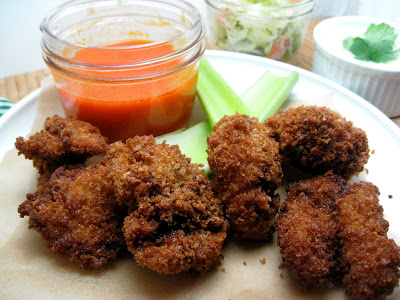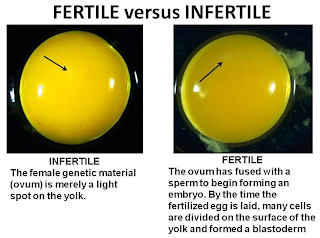Sometimes I ask my friends to do ridiculous things, and bless them, they go for it. So the other night I turn to my friend Jon and I ask him to make me fried chicken livers, but to make them pretty. I'm sure the other food photographers out there on the internet are laughing right about now. You see, fried food isn't pretty. It's delicious, crunch, savory - yes. Beautiful? Generally, no. But Jon is a wizard of frying things, and totally delivered on the promise of some lovely fried chicken livers.
They don't get any more photogenic than that folks! Seriously! Look it up!
There are few things better for me than standing in the kitchen while Jon fries things and Lauren makes sauces. I am perfectly capable of frying and sauce making - but those are skills that Jon and Lauren respectively own. I can't even compete, and I don't even want to. Sure, I never really learned the trick to frying. And even though I know how to make Lauren's Kale Caesar salad, I never do it myself if she is around! I have my skills though - you won't see Lauren or Jon baking any bread or making pies. I am our groups resident baker. I feel sorry for people who have friends that don't cook, because I absolutely love the division of labor we've got going on here. We can all feed ourselves perfectly well, but the quality of the food we make together is exponentially better. And isn't that what family and friends are for?
This was mutually our first attempt at preparing fried liver. As it turns out, liver is pretty simple to prepare. People tend to shy away from eating organ meats and liver. They think of liver as the body's toxins filter and assume that the liver must be full of stuff they shouldn't eat. While it's true that you should only consume liver from organically raised animals (otherwise you probably will be consuming a bunch of antibiotics and chemicals), the liver does more than just filter out toxins. It has too many jobs in the body for me to list them all, but one of its tasks, apart from being a filter, is to store and assimilate fat soluble vitamins like A, E, D and K. It's also chock full of vitamin B-12, folate, riboflavin, selenium, niacin, iron, and phosphorus just to name a few. Nutritionally, the downside to eating liver is that it is very high in cholesterol.
For our adventure we approximately followed this recipe from one of my favorite sites on the web Serious Eats (though we mostly just let Jon do his thing. He is the Fry Master). Here are a few things we took away from the process:
They don't get any more photogenic than that folks! Seriously! Look it up!
There are few things better for me than standing in the kitchen while Jon fries things and Lauren makes sauces. I am perfectly capable of frying and sauce making - but those are skills that Jon and Lauren respectively own. I can't even compete, and I don't even want to. Sure, I never really learned the trick to frying. And even though I know how to make Lauren's Kale Caesar salad, I never do it myself if she is around! I have my skills though - you won't see Lauren or Jon baking any bread or making pies. I am our groups resident baker. I feel sorry for people who have friends that don't cook, because I absolutely love the division of labor we've got going on here. We can all feed ourselves perfectly well, but the quality of the food we make together is exponentially better. And isn't that what family and friends are for?
This was mutually our first attempt at preparing fried liver. As it turns out, liver is pretty simple to prepare. People tend to shy away from eating organ meats and liver. They think of liver as the body's toxins filter and assume that the liver must be full of stuff they shouldn't eat. While it's true that you should only consume liver from organically raised animals (otherwise you probably will be consuming a bunch of antibiotics and chemicals), the liver does more than just filter out toxins. It has too many jobs in the body for me to list them all, but one of its tasks, apart from being a filter, is to store and assimilate fat soluble vitamins like A, E, D and K. It's also chock full of vitamin B-12, folate, riboflavin, selenium, niacin, iron, and phosphorus just to name a few. Nutritionally, the downside to eating liver is that it is very high in cholesterol.
For our adventure we approximately followed this recipe from one of my favorite sites on the web Serious Eats (though we mostly just let Jon do his thing. He is the Fry Master). Here are a few things we took away from the process:
- Pretty much every recipe out there will tell you to soak liver in buttermilk, lemon juice or vinegar. Letting the liver soak in something slightly acidic takes away the bitter flavor of liver. That bitter flavor is stronger in livers from lager animals like cows. Because chicken livers have a milder flavor, this step isn't vital. We saw recipes that called for soak times of up to 12 hours, and think this is probably more appropriate for those larger, more strongly flavored livers. We soaked our chicken livers in a buttermilk/hot sauce mixture for about an hour and a half and they were awesome.
- Batter all the liver before you start frying. Some fried foods need to hit the oil immediately after being breaded, so you have to bread as you go. The liver held onto the Panko crumb really well, and according to Jon, it was a total pain in the ass to try to batter it mid-fry. Learn from our hardship.
We ate ours like buffalo wings - with Crystal hot sauce and coleslaw on the side. Lauren whipped up a batch of homemade mayo and she divided to make a garlic/cilantro/ranch flavored dipping sauce and a coleslaw dressing. My mouth is watering just thinking about it.
(I just realized this post makes it sound like I stood in the kitchen and did nothing! I did the prep work of trimming the livers and preparing the coleslaw. It really was a group effort!)























